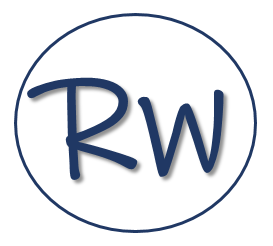Breathing during childbirth and pregnancy
The breath is already since people are being born, connected to childbirth. Which makes a lot of sense because breathing is a very effective and strong tool to manage and influence the physical state and can increase focus and performance among others. And one that you always have with you.
What struck me when my daughter was born, is how much childbirth is a basic raw natural process. In these cases it is very useful to be able to tap into the natural resources you have available to help you through this.
The breath can also already during pregnancy provide you with a lot of calmness, freedom and balance. This doesn’t only apply for the person that is pregnant, that in two-thirds of the cases experiences shortness of breath during the pregnancy (which is nothing to be worried about but does influence the physical and mental wellbeing). Also the partner can often use some extra support in the often exciting and challenging times before, during and after the child is born. A lot of people have dysfunctional breathing and even chronic hyperventilation without being aware of it. This influences directly and indirectly almost all physiological processes in the body.
Optimal breathing not only has a balancing effect for the parents, this also applies for the unborn child. The more calm and stable the environment it can grow, the more optimal it is for it’s development. Breathing can even be used to contact the baby and massage it. In my workshop ‘Breathing and pregnancy’ I dive deeper into this and a lot more.
There are multiple breathing exercises that you can use during your pregnancy and childbirth and can help you in these challenging times. Below I selected a few practical and effective exercises for you.
Do you have physical problems and want the consultation of a specialised physiotherapist? Click here for more information.
Breathing exercises
Below you will find exercises that can help you with:
- contacting the baby
- relaxation
- exercising the diaphragm and belly breathing
- the delivery process
- physical problems during and after pregnancy
Be aware that with all exercises that lead you to breathing more deep and low, this can be accompanied by surfacing old memories and emotions. If this happens, let them run freely and by breathing through them you can transform and resolve them. Belly breathing helps to bring you more in touch with the area of your body where your base and safety are located and all that stands in between of that, can surface when breathing there. Breathing to the belly is therefore often associated with power, intuition and knowing and keeping your direction.
Do you prefer exercising the breath with someone guiding you? Then make sure to check out my weekly breathclass! This very accessible lesson guides you through subtle but deep working exercises, focused on optimal breathing and freeing up the breathing process and are perfect during and after pregnancy.
All the info about the class, you can find over here:
Connecting
Through the breath you can create more connection with your body as well as the baby. Physically but also through feeling, and this exercise will help you with that.
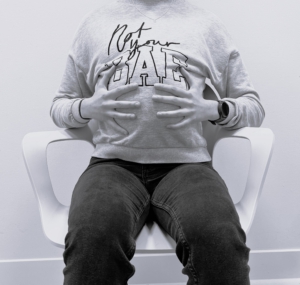
- Sit up straight and if possible without the back supported, so the belly and diaphragm has freedom to breathe. Breathe through the nose and become aware of your breathing as it is at this moment and where you can feel it best.
- Place your hands on your belly and breathe towards your hands now. Feel your belly with your hands.
- Then also feel the other way around, so the hands with your belly.
- If you are able to connect with where the hands are resting, breathe to the area below the hands, in your belly. To there where the baby is. Contact your child with your hands by sending it there. There is no need to push or force, it is all about gently directing the breath there.
- Feel the rhythmic movement of your breathing and imagine that your baby is massaged by the breathing movement. At first it can be hard to feel and you can also just imagine it happening. With a little bit of practice you can start to feel it for sure.
- Feel if you can touch the baby from every side with your breath.
- Also feel that you can surround your baby with your breathing through the soft pressure from all sides around it and that the baby can experience as a hug from you.
- Try now to breathe together with the baby and imagine it is synchronously.
- At last you can not only connect with your baby through the breath, you can also ‘feed’ or nurture it this way. Imagine that you bring your baby nutrition with every inhale. This can be with oxygen or attention, but also through an imaginary light. You can also imagine that you send your baby energy or love. Whatever works for you and feels right for you.
Relaxation
The inhale is the active part of the breathing process and is done through muscle activity, and mainly of the diaphragm. The exhale is passive, that means that it is only letting go and all about relaxation. By emphasising the inhale there is more activity in the system, by emphasising the exhale it is more on relaxation of body and mind. The latter is what we often need most and can be done by simply lengthening your exhale. Important is that you don’t breath out more air by pushing your limits of the exhale, because this amount of air you also will inhale again. It is all about keeping the volume the same and exhale until the natural stop, but letting it escape from your nose (or if easier to regulate from your mouth) at a slower pace. If this is very hard, you can also hold the breath at the end of the exhale to create a similar effect.
Doubling the length of the exhale compared to the inhale, is a very simple and effective method to quickly bring more calmness and relaxation into your system. Breathe for example in for three counts and out in six. If two to four or four to eight works better for you, use that. A few breaths often already makes a noticeable change in your system.
The well known puffing at childbirth is actually based on the same principle; the inhale becomes shorter and therefore there is a stimulus to let go of tension.
Also breathing lower into the body has a calming effect on the body. More about that you can read at the next exercise.
Train your belly breathing (= calm and balance) and your diaphragm
The diaphragm is our most important breathing muscle. Although it becomes somewhat restricted in its freedom to move when you are pregnant, it is also during pregnancy an essential breathing muscle. Activating and exercising the diaphragm has many health benefits like more internal balance and better functioning of the internal organs whereby it supports the digestion and cleansing in the body. Below we go deeper into how you can activate and train the diaphragm and belly breathing (that happens through the activity of the diaphragm).
Relearning belly breathing

Every young child breaths towards the belly. Something we adults often have unlearned because of the stress we experience and ‘living in the head’. In both cases the breathing moves upwards in the body. Also during pregnancy the breathing moves more up because the belly has less space to move along. Breathing lower has many benefits. Next that it is our natural breath, it also quickly brings calm and balance into our system.
There is a very simple exercise to reactivate and restore the belly breathing and activate the diaphragm.
- Lie down on your right side and pull the knees a bit up so you are in a stable posture.
- Place the left hand underneath your neck so your fingertips rest on the backside on the vertebrae.
- The right arm is now brought underneath the left arm and the right hand is placed on the backside of the armpit or the shoulder blade.
- Bring the elbows close to the chest and let them rest on the surface below.
- Relax your face, jaws and hands and fingers. Breathe through the nose and leave the breathing to the body and how it wants to breathe.
- Notice that you will automatically start to breathe towards the belly. Because you actually give yourself a hug, it is less easy to expand in the chest and the breathing movement will move to a lower place. A form of breathing that matches calm and relaxation.
- With every exhale let all the tension and restlessness in you slide off, physically as well as mentally.
It is also a very comforting pose, which supports the rise of relaxation. Breathing towards the belly is actually saying to the system that it is safe and you can let everything go. The relaxation is nice for you, but also for the baby. Because just like it picks up a stressed mom and environment, it also reacts quick to safe and relaxed surroundings.
The Chinese master that taught me this exercise, said that if we do this daily for 20 minutes, we regain belly breathing that we had as kids in 6 weeks. Twenty minute a day seems a lot, but if you lie down like this in bed before going to sleep, you are quickly there already. There this pose brings relaxation quickly, it is also a great one to help you fall asleep.
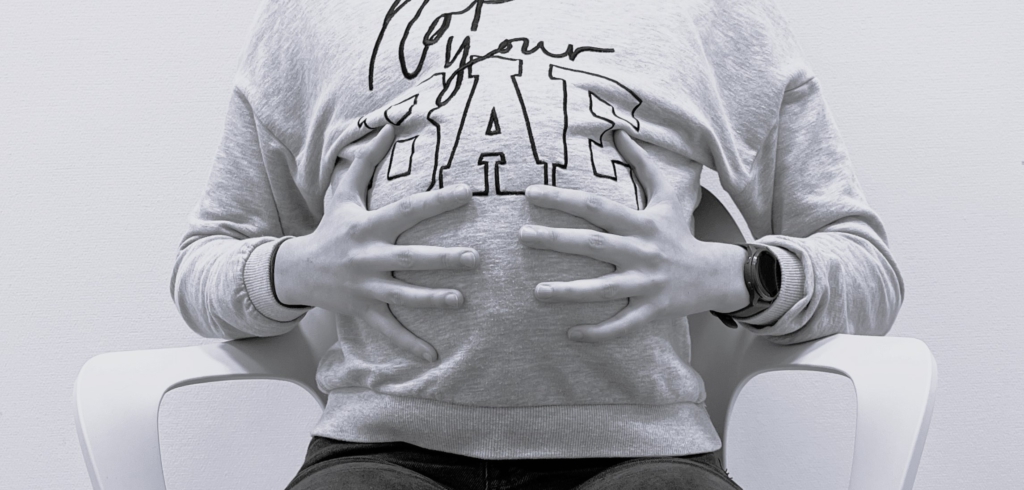
Another way to practice belly breath is sitting or lying down with the hands on the belly with the fingers slightly touching at the belly button. Now breathe towards the hands or beyond them. Feel that the belly widens and the fingers spread with the inhale.
Activate the diaphragm
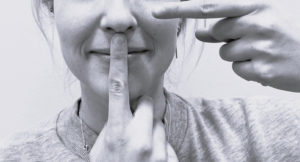
Next to this easy exercise of lying on the side, the diaphragm is also activated by simply breathing through the nose. Which also has many health benefits. Breathing through the mouth is always plan B and if through the nose is not sufficient anymore, like with sports. The breathing is also more up in the chest when breathing through the mouth.
Breathing through the nose is connected to breathing towards the belly and that is done by the diaphragm.
‘Wing breathing’
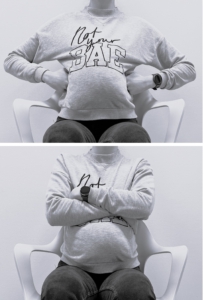
The diaphragm moves downwards with an inhalation and in this way for a belly breath. In the later stages of the pregnancy this is less easy because the growing baby takes up more and more space. The diaphragm also moves the lower ribs outwards and by exercising that, you can keep the diaphragm flexible and fit.
- Sit up straight and if possible without the back supported, so the belly and diaphragm have freedom to breathe.
- Bring your hands to the lowest ribs on both sides, which mostly is at the same level as the belly button.
- Widen your elbows and place the backside of your fingers or your fist against the most lateral part of the lowest ribs. If this is uncomfortable for your arms, you can also cross them and put the inside of your hands on the outside part of the lower ribs. With the elbows wide works normally best though.
- Breathe through the nose and feel how the ribs move outward during the inhale and move back during the exhale. If it is hard to experience this, try to deepen the inhale a bit and direct it more towards the belly. You can also try to direct the breathing towards where your hands are resting. All without forcing it but, just by directing your breath.
This exercise also can be done lying on your back, and preferably with the knees bended and feet flat. Push your fingers under your lowest ribs with the palm of hands facing up or down and then breathe towards the fingers and mainly also to the sides so towards the wrists.
The more sideward movement and being able to emphasise this movement, the more you exercise your diaphragm and breathing.
Diaphragm release

There is a spot through which you can quickly relax the diaphragm and this technique is as follows:
- Sit up straight, preferably without back support and follow with the fingertips the lowest ribs to the front all the way until they meet just below the chest bone. From there move a little bit down to the softer part and feel that you can press inwards. This pressure is often somewhat uncomfortable and that’ss nothing to be concerned about. It is this painful pressure that will reduce the tension of the diaphragm.
- Now bend with your upper body a bit forward over your fingertips so your abdominal muscles relax.
- While keeping the pressure into the deeper layers, now breathe towards the fingertips and sensitive area. You’ll feel that they are being pushed forward by the breathing movement, but try to prevent that from happening. With the relaxation during the exhale, you might increase the pressure a bit more.
- Do this for ten times or so and then release the pressure. Feel afterwards how there is an increased space for the breath here in this area. You released the diaphragm with this exercise.
During childbirth
If you practise your control over your breathing and the ability to hold your attention at the breath, it can help you a lot during childbirth. It doesn’t only help a more fluent delivery, it also prevents physical problems from arising and gives you a quicker recovery.
Breathing during childbirth, can be divided in breathing during contractions, breathing during delivery and the breathing outside of these active phases. During all these phases the key focus is on keeping your breathing as natural as possible, which mainly during the contractions can be very hard and will be easier with having trained with your breath before.
The breath can also lead the process. During contractions, it can help to endure them and to stay in contact with your body and baby. If you manage to keep breathing towards the pain and baby, you maintain contact with the process and prevent that the pain becomes larger than it actually is and can easily be overwhelming. The breathing here is mainly focused on ‘riding the waves’ and not yet to come to activity.
This is of course not the case with the contractions during the actual delivery phase. Here the breathing can support the guiding of the baby towards the exit. The most important is probably that you don’t lock your breath during the pushing and after inhaling, but let it while delivering pressure, mildly escape as through a valve until there is no more air left. The breath is directed towards where the baby is being born. The longer you can remain breathing naturally (through the nose, calm and deep) though, the better it is and the less energy you will lose. Especially with a long childbirth that is important. Also a natural breathing helps to keep the oxygen supply for the organs, like the uterus, optimal. During normal pace breathing during the contraction, you breath along with it at the exhale. It also helps to keep the face, lower body and legs as relaxed as possible.
So, an important thing for the breathing during intenser periods, is to keep the breathing as calm and deep as possible, because with quicker breathing the risk on hyperventilating increases. It is good to keep being aware of this, because many people already breathe faster and more superficial than necessary. This is possible by keeping focus on the exhale and not only on inhaling. This is also one of the reasons why the well known ‘puffing’ (inhaling through the nose and in three puffs exhaling through the mouth, the first two short and the last long until the lungs are empty), emphasises the exhale.
Because the breathing techniques during contractions and delivery are more specific and personal, I like to refer you to your midwife for these.
The breathing in between the contractions, is just as important. In these breaks it is essential to find the calm and stability again as quickly a possible so you can recover. Breathing is the perfect tool for this because it changes state quickly and is always with you.
By breathing through the nose, bringing the breathing towards the belly and/or lengthening the exhale, can already be enough.
A stronger ‘state changer’
Since the contractions during labor are often a very intense experience, getting out of the ‘on-mode’ is not always easy and sometimes a stronger technique is needed. You can try to use the next one to establish that.
The sound of Ohm is used a lot at yoga lessons and is the start of almost every Tibetan mantra. It is also called ‘the sound of origin’ and Ohm consists of three basic tones; Ah, Ou and Hmm. So actually it is AUM. These sounds are very basic and the only three that you can utter without using your tongue. You can use these sounds to support the breath to calm the physical as well as the mental state and you’ll notice this exercise is easy and accessible.
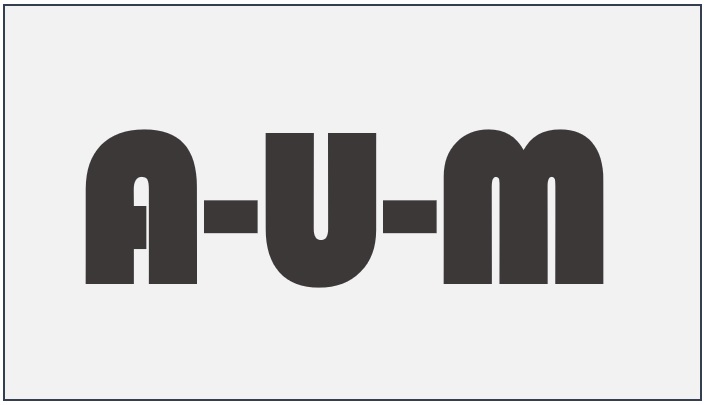
- During this exercise you breath in through the nose in 3 to 4 counts, and on the exhale through the mouth, you make the sound of a lengthened Ah, followed by Ou and then Hmm. This can be done as loud or soft as you wish and feels good for you.
- You can also experience the vibrations of the different sounds in your body, the Ah in abdominal region, the Ou more at the heart area and the Hmm in the forehead at the space between the eyebrows.
- The exhale is divided over these three tones and try to make each of them as long as the inhale. This automatically means that your exhale is three times as long as your inhale and this already works relaxing.
- With the inhale you can contact your body and baby, and with the exhale melt with your whole being. So moving downwards every time again with the inhale, and let everything integrate during the exhale.
By finding a rhythm with the AUM, you’ll have an anchor to focus on and gain more balance quickly. The ‘toning’ provides you with a strong stimulus towards your system on top of the breath, and this way it works even deeper. By using this low tone of Ohm, your breathing also stays more easily low in your body, where higher pitch tones bring you more towards the chest and throat and your breathing also goes upwards.
Try this for yourself and feel what it does for you.
For this and all breathing techniques goes that the more you practice them, the easier you can apply them during challenging circumstances like childbirth, because as said it is harder to move to calm and peace from the ‘on-mode’ than from a more neutral state.
Breathing and physical problems
During pregnancy and after childbirth many women experience physical problems. Especially the pelvis and lower back are often painful or unable to cope. Also here breathing can help.
Of course you can also consult a physiotherapist, preferably one that is specialised in pregnancy related problems and the pelvis. Are you curious if physiotherapy is useful for your problems and where to find a specialised physiotherapist? Click below:
Lower back breathing
This breathing technique is very pleasant for lower back and pelvis problems.
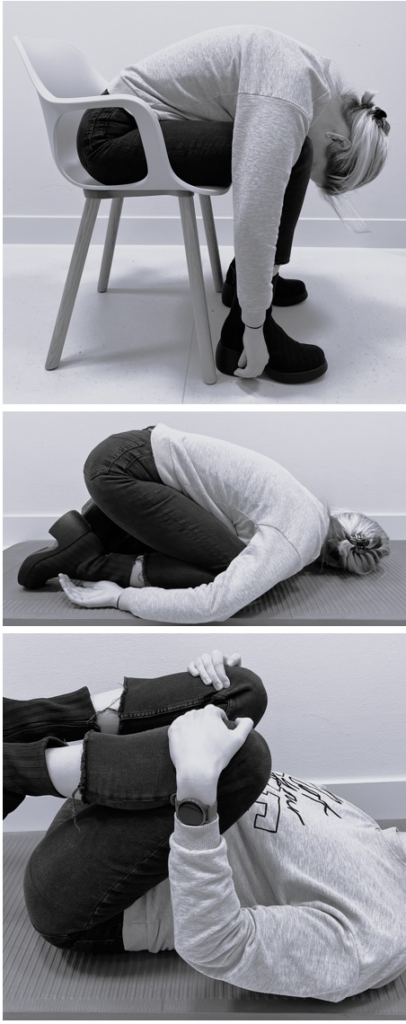
- Sit down on a chair or couch with the legs somewhat spread.
- Bend forward as far as the body permits and you feel a stretch in the lower back.
- This exercise can also be done in child’s pose, so sitting on the knees, buttocks on the heals and knees wide so there is enough space for the belly and then with the forehead on or directed to the floor. When the child’s pose or the forward bended sitting is too strenuous, you can also lay down on your back, pull the knees towards you (wide so the belly has enough space). This way the lower back is somewhat pressed against the surface below so you can feel the breathing movement here.
- Let your arms rest downwards and breathe through your nose and deep towards the belly. You’ll notice that it is hard because there isn’t a lot of freedom to move anymore. While still directing your breathing downward, the breathing movement will automatically go towards the lower back and pelvis.
- What can extra help is to imagine you breath in through the back of the pelvis or tailbone and also exhale here. This makes the breathing a bit more deep.
Feel the rhythmic movement from the inside out and how there is a kind of internal massage. This exercise brings next to relaxation by breathing low, also space and freedom to the lower back and pelvic joints and is therefore very suitable when there is tension or problems in the lower back or pelvis.
Breathclass!
Do you want to start working with your breath and exercise and optimalise it?
My weekly breathclass is the place to be for you!
This lesson is accessible for everybody and because it has a calm and balancing approach, it is very suitable for women during and after pregnancy. Are you curious? Click the button below:
